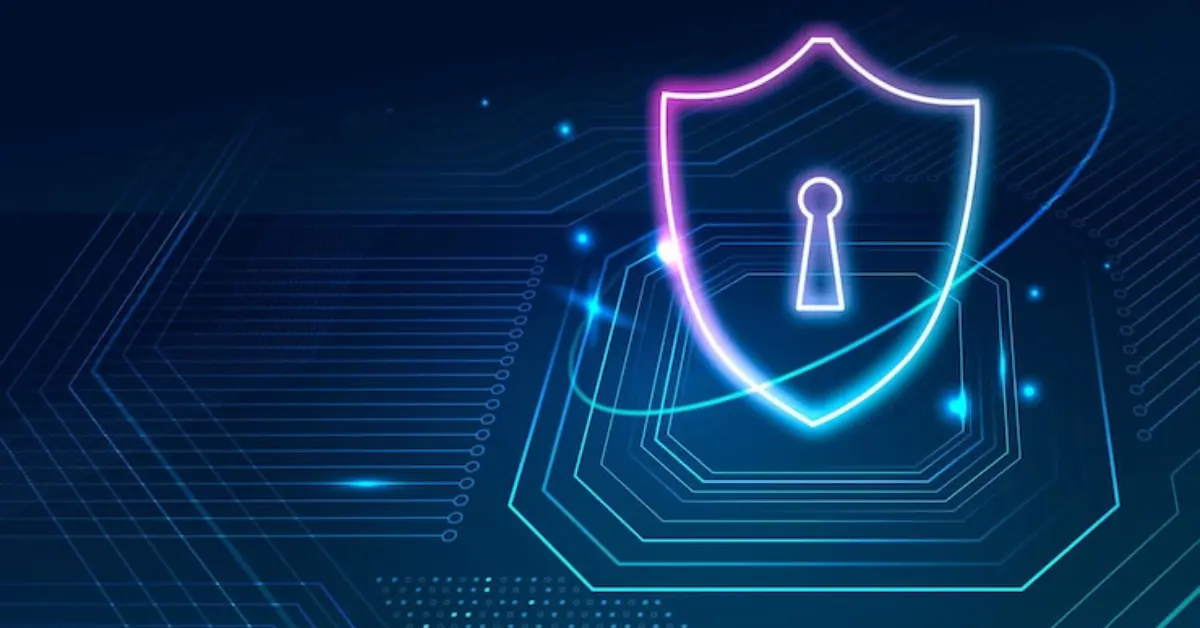Introduction
In today’s interconnected digital landscape, the threat of ransomware looms larger than ever. Cybercriminals constantly evolve their tactics, making it crucial for organizations to build a resilient defense against digital extortion. This article explores effective strategies for fortifying your digital infrastructure and safeguarding against ransomware attacks.
Understanding Ransomware
In the rapidly advancing realm of cybersecurity, one menacing threat stands out—ransomware. This malicious form of software has evolved into a formidable weapon for cybercriminals, wreaking havoc on individuals, businesses, and even governments. To navigate the digital landscape safely, it’s crucial to comprehend the intricacies of ransomware, including its mechanisms, common attack vectors, and preventive measures.
What is Ransomware?
Ransomware is a type of malicious software designed to block access to a computer system or files until a sum of money, or ransom, is paid. This form of cyberattack has become increasingly prevalent and sophisticated over the years.
Here’s a basic understanding of how ransomware works:
- Infection:
- Delivery: Ransomware typically enters a system through phishing emails, malicious attachments, or infected websites. It can also spread through vulnerabilities in software or operating systems if they are not regularly updated.
- Execution:
- Once inside a system, the ransomware executes its code, encrypting files on the infected device or network. Encryption renders the files unreadable without the corresponding decryption key.
- Notification:
- After files are encrypted, the ransomware displays a ransom note, often in the form of a pop-up window or a text file on the victim’s desktop. This note contains instructions on how to pay the ransom, usually in cryptocurrency such as Bitcoin, to obtain the decryption key.
- Payment:
- Victims are typically given a deadline to pay the ransom. If they fail to meet this deadline, the ransom amount may increase, and in some cases, the decryption key may be permanently withheld.
- Decryption:
- If the victim decides to pay the ransom, the attacker may provide the decryption key to unlock the encrypted files. However, there is no guarantee that paying the ransom will result in the recovery of files, and it may encourage further criminal activity.
- Consequences:
- Even if the ransom is paid and files are decrypted, the system is still compromised. There may be lingering malware, and the attackers could potentially strike again. Additionally, paying ransoms fuels the profitability of such attacks, encouraging cybercriminals to continue their activities.
To protect against ransomware attacks, individuals and organizations can take several measures:
- Regular Backups: Maintain up-to-date backups of important files to facilitate recovery without paying the ransom.
- Security Software: Use reputable antivirus and anti-malware software and keep it updated.
- Software Updates: Regularly update operating systems and software to patch vulnerabilities.
- Email Vigilance: Be cautious with email attachments and links, especially from unknown or suspicious sources.
- User Training: Educate users about the risks of phishing and the importance of cybersecurity hygiene.
Key Steps for Building Ransomware Resilience
- Regular Backups: The First Line of Defense
One of the most effective ways to mitigate the impact of a ransomware attack is to maintain regular backups of your critical data. Ensure that backups are stored in a secure, isolated environment to prevent them from being compromised during an attack. Regularly test your backup and restoration processes to ensure a quick recovery in case of an incident.
- Employee Training and Awareness
Human error is a significant contributor to successful ransomware attacks. Conduct regular training sessions to educate employees about the risks associated with phishing emails, suspicious links, and the importance of strong password management. Creating a cybersecurity-aware culture within the organization is essential for preventing the initial entry points of these attacks.
- Advanced Endpoint Protection
Investing in advanced endpoint protection solutions can significantly enhance your defense against ransomware. These tools use sophisticated algorithms and real-time threat intelligence to detect and block malicious activities before they can cause harm. Regularly update and patch all software to address vulnerabilities that cybercriminals may exploit.
- Network Segmentation
Segmenting your network can limit the impact of a ransomware attack by isolating affected systems and preventing the lateral movement of the malware. Restricting access based on job roles and implementing the principle of least privilege ensures that even if one segment is compromised, the entire network remains protected.
- Incident Response Plan
Developing a comprehensive incident response plan is crucial for minimizing the damage caused by a ransomware attack. Clearly define roles and responsibilities, establish communication channels, and conduct regular drills to ensure a swift and coordinated response in the event of an incident.
- Collaboration with Cybersecurity Experts
Engage with cybersecurity experts and leverage their expertise to continuously assess and enhance your security posture. Regularly conduct vulnerability assessments and penetration testing to identify potential weaknesses in your infrastructure before attackers can exploit them.
- Legal and Compliance Measures
Stay informed about cybersecurity regulations and compliance standards relevant to your industry. Adhering to these regulations not only helps protect sensitive data but also ensures that your organization is well-prepared to handle legal aspects in the aftermath of a ransomware attack.
Collaborating with Cybersecurity Experts: A Proactive Defense Approach
Collaboration and create a strong defense posture:
- Establish Clear Communication Channels:
- Foster open communication between IT teams, security professionals, and other relevant stakeholders.
- Ensure that everyone understands the importance of sharing information promptly and accurately.
- Conduct Regular Training:
- Provide ongoing training for both IT and non-technical staff to increase awareness of cybersecurity threats and best practices.
- Create simulated phishing exercises and other scenarios to test and improve the organization’s overall cybersecurity readiness.
- Incident Response Planning:
- Develop and regularly update an incident response plan that outlines the steps to be taken in case of a security incident.
- Conduct tabletop exercises to simulate various cyber threats and test the effectiveness of the response plan.
- Threat Intelligence Sharing:
- Collaborate with industry-specific information sharing and analysis centers (ISACs) and other organizations to exchange threat intelligence.
- Stay informed about emerging threats and vulnerabilities that could impact your organization.
- Collaborative Risk Assessments:
- Work together to conduct comprehensive risk assessments, identifying potential vulnerabilities and assessing the impact of a security breach.
- Use the results to prioritize security measures and allocate resources effectively.
- Implement Security Best Practices:
- Follow industry best practices for cybersecurity, including regular software updates, patch management, and the use of strong authentication methods.
- Adopt a defense-in-depth strategy, incorporating multiple layers of security to mitigate risks.
- Regular Security Audits:
- Conduct regular security audits, both internal and external, to identify weaknesses and ensure compliance with security policies and regulations.
- Collaborate with external cybersecurity firms to bring in fresh perspectives and expertise.
- Utilize Advanced Technologies:
- Deploy cutting-edge cybersecurity technologies, such as intrusion detection systems, threat intelligence platforms, and artificial intelligence-based security solutions.
- Leverage automation to enhance the speed and efficiency of threat detection and response.
- Cross-Functional Cybersecurity Teams:
- Form cross-functional teams comprising IT, security, legal, and business representatives to ensure a holistic approach to cybersecurity.
- Foster a culture of collaboration and shared responsibility for cybersecurity across departments.
- Continuous Improvement:
- Regularly review and update cybersecurity policies and procedures based on lessons learned from incidents and evolving threat landscapes.
- Encourage a culture of continuous improvement and adaptability to stay ahead of emerging cyber threats.
Evaluating and Selecting Ransomware Insurance: A Risk Mitigation Strategy
Evaluating and selecting ransomware insurance is a critical component of a comprehensive risk mitigation strategy for organizations. Ransomware attacks have become increasingly sophisticated, making it essential for businesses to have financial protection in place.
Process of choosing ransomware insurance:
- Understand Your Risk Profile:
- Conduct a thorough risk assessment to understand your organization’s specific vulnerabilities and the potential impact of a ransomware attack.
- Consider factors such as industry, size, geographic location, and existing cybersecurity measures.
- Coverage Analysis:
- Evaluate the coverage offered by different insurance policies. Look for policies that cover not only ransom payments but also other related expenses, such as legal fees, forensics, and public relations efforts.
- Assess the coverage limits and sub-limits for different types of expenses.
- Policy Exclusions and Limitations:
- Carefully review policy exclusions and limitations. Some policies may have specific exclusions for certain types of attacks or may limit coverage in certain scenarios.
- Ensure the policy aligns with your organization’s risk tolerance and business operations.
- Pre-Existing Conditions and Cybersecurity Practices:
- Insurers may inquire about your organization’s existing cybersecurity practices and protocols. Demonstrating strong cybersecurity measures may result in more favorable insurance terms.
- Be transparent about any pre-existing cybersecurity issues and address them before seeking coverage.
- Response and Recovery Support:
- Assess the level of support provided by the insurer in the event of a ransomware incident. Look for policies that offer assistance with incident response, forensic investigations, and recovery efforts.
- Ensure that the insurer has a network of experienced cybersecurity professionals and legal experts.
- Notification and Communication Assistance:
- Evaluate whether the insurance policy includes coverage for the costs associated with notifying affected parties, managing public relations, and complying with regulatory requirements.
- Clear and effective communication during and after an incident is crucial for minimizing reputational damage.
- Negotiation and Payment Assistance:
- Check if the policy covers the costs associated with negotiating with cybercriminals and facilitating ransom payments.
- Some policies may offer access to professional negotiators who specialize in dealing with ransomware attackers.
- Incident History and Reputation of the Insurer:
- Research the insurer’s track record in handling cyber claims, specifically ransomware incidents.
- Consider the insurer’s reputation in the industry and their financial stability.
- Policyholder Obligations:
- Understand the obligations imposed on your organization as a policyholder. Compliance with cybersecurity best practices and timely reporting of incidents may impact coverage eligibility.
- Cost of Premiums:
- Compare the costs of premiums across different insurers, but avoid making decisions solely based on price.
- Balance the premium costs with the coverage provided and the insurer’s reputation in the market.
- Legal and Regulatory Compliance:
- Ensure that the insurance policy aligns with legal and regulatory requirements in your industry and geographic location.
- Work closely with legal experts to understand the implications of different policy terms.
- Review and Update Policies Regularly:
- Cyber threats are constantly evolving, so it’s crucial to regularly review and update your insurance policies to ensure they remain effective in mitigating current risks.



